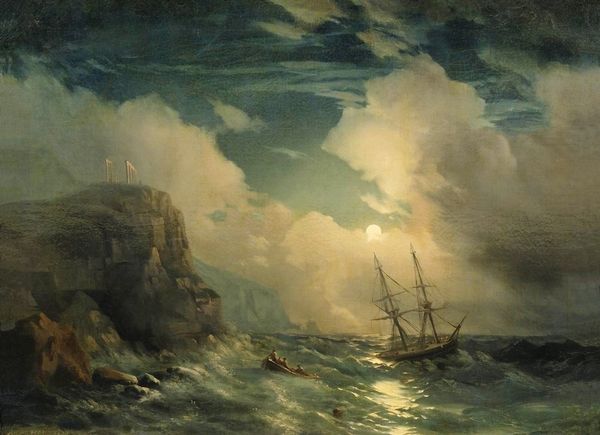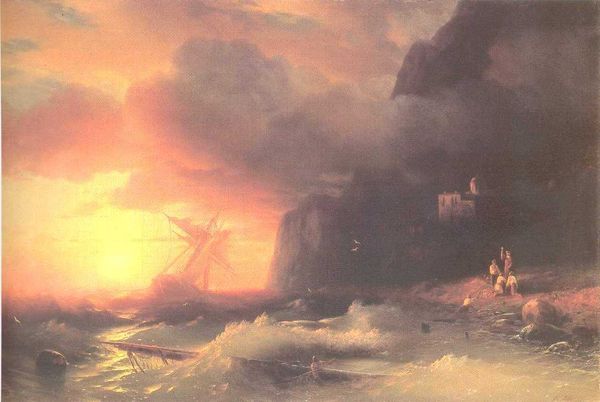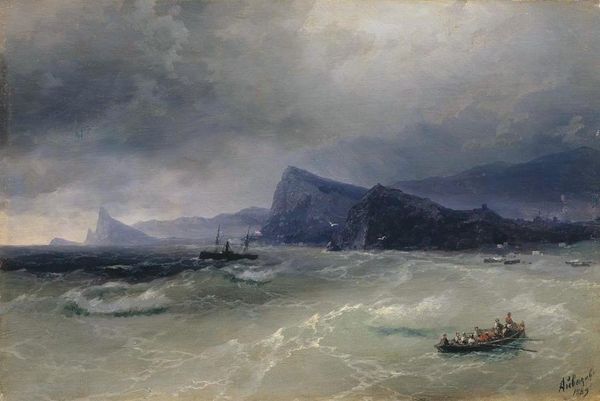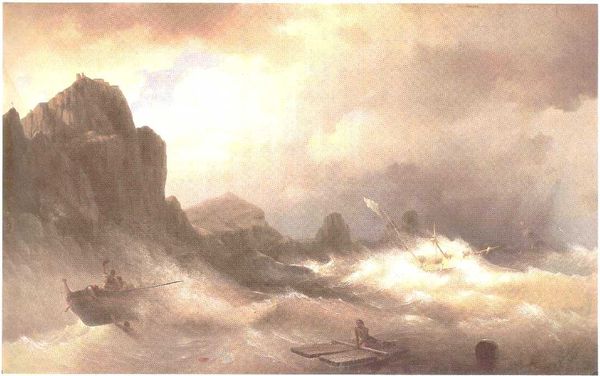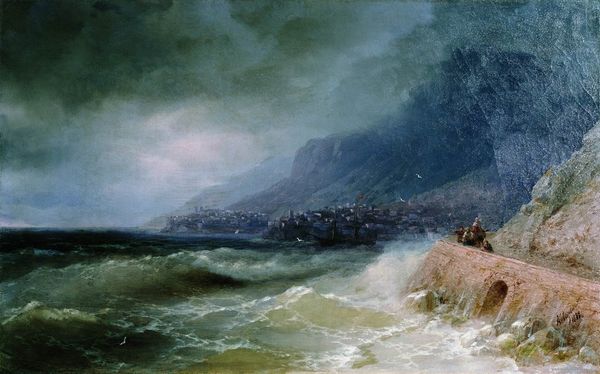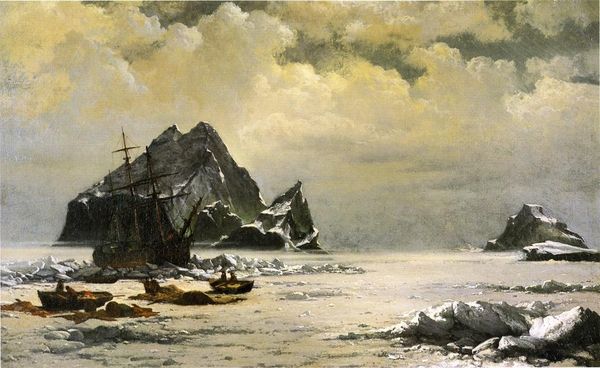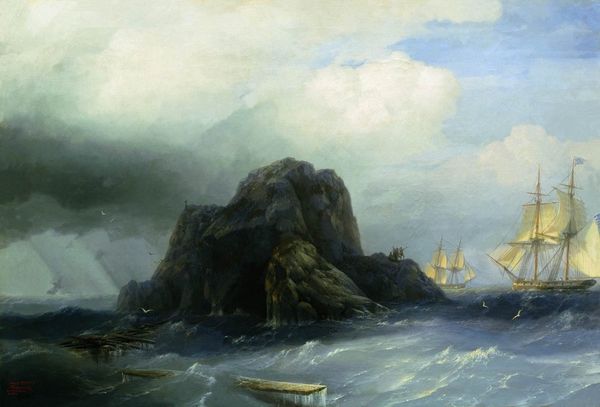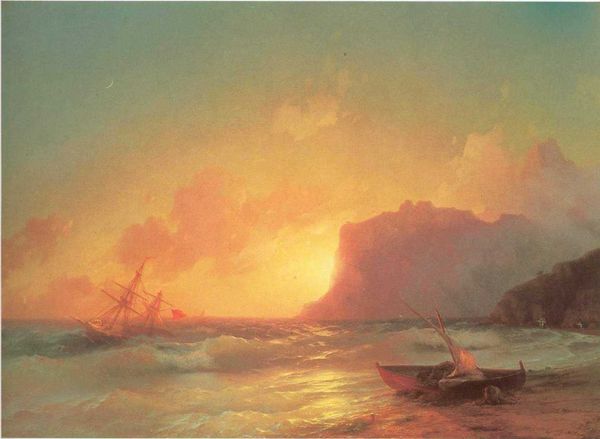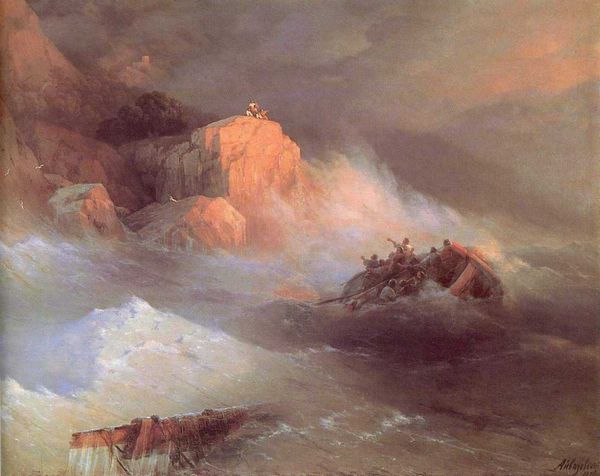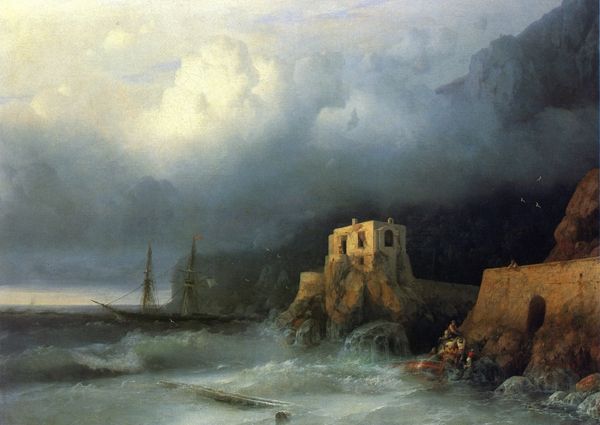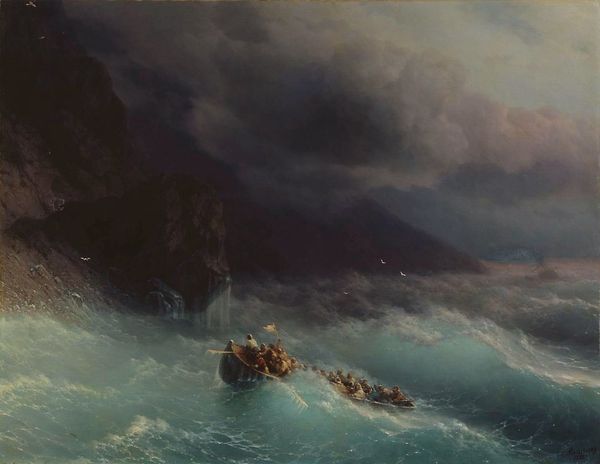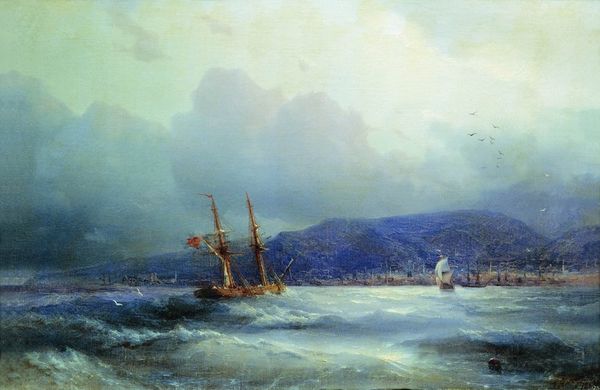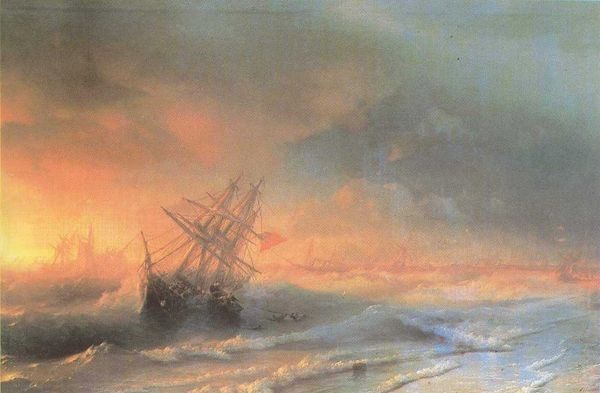
oil-paint
#
night
#
boat
#
sky
#
ship
#
oil-paint
#
landscape
#
ocean
#
romanticism
#
mountain
#
cityscape
#
history-painting
#
realism
#
sea
Dimensions: 82 x 117 cm
Copyright: Public domain
Curator: Standing before us is "Tempest," an 1850 oil painting by Ivan Konstantinovich Aivazovsky. The canvas pulsates with a primal scene, doesn't it? Editor: Absolutely, there's a definite sense of violent struggle in this work. My immediate reaction is awe at the sheer power conveyed through the thick layering of paint to emulate water. Look at the ways it crashes and froths! Curator: Yes, and note Aivazovsky's adept handling of light, almost obscuring the vessels engulfed by the ferocious elements. One has to wonder about labor and exploitation under maritime empires, considering how crucial ships were as production instruments and how disposable their working class could be. What stories of race, class and gender do you think can be unearthed if we considered how maritime expansion enabled the subjugation of entire continents and nations of peoples? Editor: Those ships are certainly caught in a losing battle against nature's awesome force; but thinking about the process, what sort of supports, grounds, pigments and brushstrokes do you think that Aivazovsky had access to in the 19th century to emulate this level of visceral materiality? And what type of craftsmanship enabled the labor involved to depict something this epic in scale, but small enough to be put in a gallery. It's easy to dismiss such dramatic portrayals as 'mere' landscape painting, but I think these ships embody more. They represent industry, production, and a complex web of materials that stretched across the globe. Curator: Interesting! A compelling viewpoint considering how, back then, Romanticism often glorified nature while eliding the socio-economic realities of human experience. This tempest, though a natural event, has to be understood in its consequences. For the working sailors whose lifeblood depends on surviving such turmoil and their unequal social conditions compared to the ruling class, and even how that can resonate to gendered experience in maritime industry, with unequal opportunities or overlooked female contributions... Editor: Precisely! It isn't *just* water; it's the tangible manifestation of a larger material system involving the sea and sailing. That's what gives this romantic artwork more relevance, the consideration for human intervention despite all the chaos happening on deck, a very tangible relationship, an active engagement. Curator: Indeed. Examining "Tempest" forces us to confront nature’s power alongside our own intricate, yet precarious societal structures. Editor: And for me, it reinforces the value of artistic labor, which transforms readily available raw materials to depict class, material process and power. Food for thought.
Comments
No comments
Be the first to comment and join the conversation on the ultimate creative platform.
